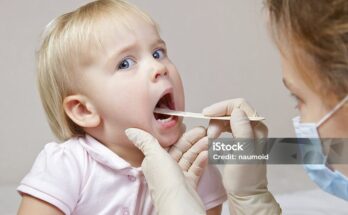Epilepsy is a catastrophic neurological disorder and is defined as a condition in which a person experiences more than one unprovoked seizure in their life time. In most cases children with epilepsy experience developmental delays, behavioral disorders and learning disabilities. It is thus advisable that parents and or caregivers require adequate information on the definition, causes, symptoms, diagnosis as well as the treatment plans for the condition.
Definition
Epilepsy may be described as a durative neurological ailment that results into recurrent seizures. Such seizures may be of different kinds and intensity, and can involve changes of consciousness, motor function, and, of course, behavior of a child. Currently, the International League Against Epilepsy (ILAE) understands epilepsy as a group of diseases that needs specific treatment and control.
Causes
The causes of epilepsy in children can be multifaceted, including:
Genetic Factors: Certain types of the disease are inherent and occur due to the inherited mutations of genes that cause childhood epilepsy.
Brain Injuries: Seizures resulting from an accident or a complication during childbirth, including anemia and lack of oxygen, cause epilepsy.
Infections: Infections of the brain, for instance, meningitis or encephalitis will cause seizures and lead to epilepsy.
Developmental Disorders: Some of the factors that have been found to cause epilepsy include; Autism spectrum disorders and Neurofibromatosis.
Structural Abnormalities: Epilepsy can also be attributed to congenital brain malformation or the acquired brain injury.
Symptoms
The manifestations of epilepsy have relations with the type of seizure pointers. Common types include:
Generalized Tonic-Clonic Seizures: Often described as a focal impaired awareness seizure, these seizers cause muscle stiffening and rhythmic jerking while unconsciousness.
Absence Seizures: Mild involuntary episodes where the child might be inattentive as if in a dream, the episodes are usually brief, and may only last for a few seconds.
Focal Seizures: These can start in one part of the brain and can produce strange feelings or movements and may or may not include an altered state of consciousness.
Other possible symptoms associated with seizures may include:
Staring spells
Confusion or disorientation
Jerking movements
Lack of control of one’s own body
An emotional change or a change in behavior that happens before a seizure.
Diagnosis
Diagnosing epilepsy involves a comprehensive evaluation that may include:
1.Medical History: Previous medical history of the child including antecedent history of seizures and/or any other co-existing illness in the child’s pedigree.
2.Neurological Examination: Physical examination that provides information about child’s co-ordinator and motor activity, grade of reflexes and sensorium level.
3.Electroencephalogram (EEG): This test measures the electrical signals of the brain and can indicate abnormal activity that one experiences during a seizure.
4.Imaging Studies: Often, doctors may use MRI or CT scans in order to determine whether or not there are structural problems with the patient’s brain that may be causing the seizures.
5.Additional Tests: Occasionally, other medical tests such as blood test or a tetrazolium test for genetic disorder may be carried out to eliminate other possibilities or to confirm genetic results.
Treatment
While there is no cure for epilepsy, various treatment options can effectively manage the condition:
Medications: The basic medication for managing includes antiepileptic drugs (AEDs). The prescription of the medicine depends on a particular type of seizure, child age, and possible complications. The right drug or the right drug regimen takes some time to identify completely.
Dietary Therapy: This diet, which has little starch but which is rich in fats, is effective in decreasing seizures in some children, especially those for which conventional antiepileptic drugs are ineffective.
Surgery: In any case, whenever a child has clearly focal seizures and have no response to drugs, surgery may then act to remove such affected area of the brain.
Vagus Nerve Stimulation (VNS): This involves using an implantable device that sends electrical signals to the brain through a vagus nerve with the aim of decreasing the rate of the sekzines.
Responsive Neurostimulation (RNS): A relatively recent therapy, RNS uses an implanted device that paves electricity irregularity in the brain and interrupts the seizures.
Support Services: However, counseling, educational assistance, and community intervention become critical in epilepsy care and the care of the child.
Conclusion
In the case of children, epilepsy also presents a very demanding clinical issue that needs an individual approach to examination and management. The quality of life of a child can be enhanced even with early treatment and an effective management programme. Families should have involvement with health care profession to create efficient programs.



